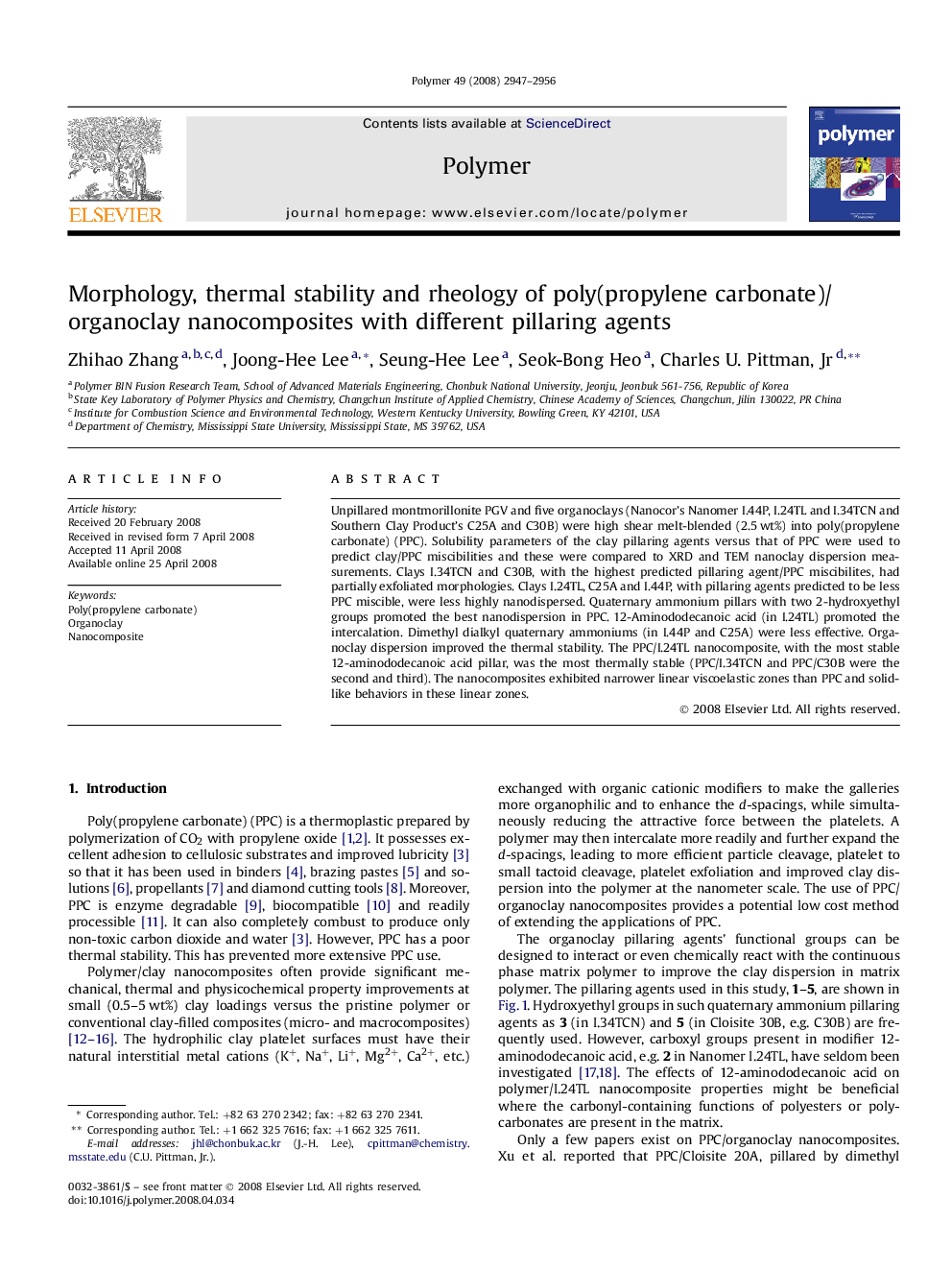| Article ID | Journal | Published Year | Pages | File Type |
|---|---|---|---|---|
| 5186996 | Polymer | 2008 | 10 Pages |
Unpillared montmorillonite PGV and five organoclays (Nanocor's Nanomer I.44P, I.24TL and I.34TCN and Southern Clay Product's C25A and C30B) were high shear melt-blended (2.5Â wt%) into poly(propylene carbonate) (PPC). Solubility parameters of the clay pillaring agents versus that of PPC were used to predict clay/PPC miscibilities and these were compared to XRD and TEM nanoclay dispersion measurements. Clays I.34TCN and C30B, with the highest predicted pillaring agent/PPC miscibilites, had partially exfoliated morphologies. Clays I.24TL, C25A and I.44P, with pillaring agents predicted to be less PPC miscible, were less highly nanodispersed. Quaternary ammonium pillars with two 2-hydroxyethyl groups promoted the best nanodispersion in PPC. 12-Aminododecanoic acid (in I.24TL) promoted the intercalation. Dimethyl dialkyl quaternary ammoniums (in I.44P and C25A) were less effective. Organoclay dispersion improved the thermal stability. The PPC/I.24TL nanocomposite, with the most stable 12-aminododecanoic acid pillar, was the most thermally stable (PPC/I.34TCN and PPC/C30B were the second and third). The nanocomposites exhibited narrower linear viscoelastic zones than PPC and solid-like behaviors in these linear zones.
